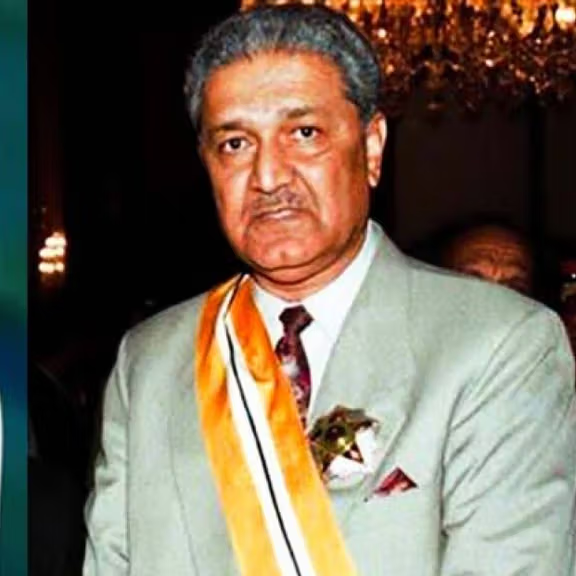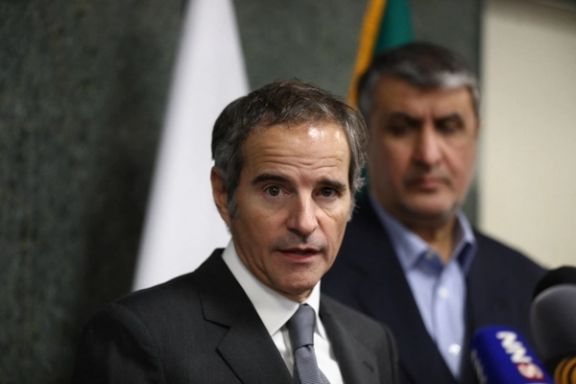Mohammad Eslami’s Role In Iran’s Secret Nuclear Projects

Mohammad Eslami, Iran's current nuclear chief, played a key role in the secret part of the country’s nuclear program, according to a confidential source.

Mohammad Eslami, Iran's current nuclear chief, played a key role in the secret part of the country’s nuclear program, according to a confidential source.
President Ebrahim Raisi appointed Eslami to his current position in 2021 amid pressure by the International Atomic Energy Agency (IAEA) regarding uranium traces found at three nuclear facilities used prior to 2003 when Iran’s nuclear program was secret.
The source who is familiar with the inner workings of AEOI told Iran International that Eslami has the task of erasing the traces of suspicious nuclear activities of the Islamic Republic.
There is reason to believe that the three sites were not only used prior to 2003, but also much later.
Eslami had served as Minister of Roads and Urban Development in the former government and his appointment as nuclear chief surprised many. For the younger generation, the former official’s background seemed unrelated to his nuclear post.
However, a look at Eslami’s resume shows that he played a crucial role in the most critical stages of Tehran’s secret nuclear projects.
Between 1987 and 1989, an envoy from the Ministry of Defense traveled to Dubai to meet Abdul Qadeer Khan, a Pakistani scientist who sold nuclear knowledge and enrichment equipment to the Islamic Republic.

Years later, Abdul Qadeer Khan confirmed the deal with the Islamic Republic in a television interview.
The source with links to the Iranian Organization of the Defensive Innovation and Research (SPND) said, that the mission to Khan was carried out under the supervision of an office headed by Mohammad Eslami.
In a chart leaked from nuclear documents stolen from Iran by Israel, the role of Mohammad Eslami is prominent. As the head of the Defense Industries Educational and Research Institute, he was involved in all aspects of Iran's secret nuclear program that grew into various branches over the years.
One of the most important of these was the Amad project, the Islamic Republic's plan to build an atomic warhead that was pursued under the supervision of Mohsen Fakhrizadeh, Iran's prominent nuclear figure and was stopped in 2003 when it was revealed or leaked.
Fakhrizadeh was assassinated in November 2020, reportedly by Israel in a complicated operation resembling Hollywood thrillers.
The source in SPND said the supervisor of this project was Eslami, and the funds allocated to these programs were spent directly in line with Mohammad Eslami's discretion.
With the closure of the "Amad" project, Iran's secret nuclear projects continued in a new organization, the SPND.
For two years after the signing of the JCPOA, Eslami was the deputy of industrial and research affairs of the Ministry of Defense and a member of Iran's nuclear program.

An office mentioned in the nuclear administrative chart of the Islamic Republic is of particular interest. The Orchid Office is an important center in Iran's program to acquire nuclear weapons, according to our source. A building on Orchid Street in Pasdaran district, Tehran, is where major contracts are signed was managed until two years ago by Eslami until Fakhrizadeh was assassinated.
SPND was the center where Fakhrizadeh was pursuing his unfinished plan for the Amad project on a separate budget line.
The United States has sanctioned SPND exactly for its secretive nuclear work.
The two nuclear sites of Sorkh-eh-hesar, [Tehran], and Marivan near Abadeh, Fars Province, were given to SPND so that Fakhrizadeh could pursue his plan to produce nuclear weapons with the cooperation of Saeed Borji, an expert in atomic explosions.

However, by looking at the history of the Atomic Energy Organization of Iran, each of the heads of this organization was appointed out of a specific necessity.
During the years when the secret nuclear program was pursued in the Ministry of Defense, Reza Amralahi was the head of the organization.
With the development of this program and the need to build and equip extensive facilities such as Natanz, in Esfahan Province, Gholamreza Aghazadeh became the head of the organization. This former oil minister had the power to inject cash into Iran's nuclear program.
His strong disagreement with then-president Mahmoud Ahmadinejad led Ali Akbar Salehi to become the head of the organization. Salehi who was Iran’s former representative at the IAEA took the helm of the Atomic Energy Organization when the negotiating team when the UN Security Council was issuing sanction after sanction against Iran in early 2010s.
With the assassination of nuclear scientists and under the pressure of the Revolutionary Guards, Fereydoun Abbasi became the head of the Atomic Energy Organization, who himself had survived an assassination.
Although years later, in an interview with the Ensaf News website, which was deleted after publication, a security official considered his assassination suspicious and raised the possibility that he was a spy. Abbasi was one of Fakhrizadeh's colleagues and one of his vociferous opponents and rivals.
When the JCPOA’s time arrived, Salehi returned to the AEOI as a scientific figure.
With the election of Raisi in the most engineered election in the history of the Islamic Republic, Eslami is the repository of Islamic Republic’s nuclear secrets and was appointed as the best suited person in the post of nuclear chief to eradicate all traces.
He announced August 1 that the Islamic Republic had achieved the ability to build nuclear weapons.
During his one-year tenure, Iran has hardened its position not to provide further explanations to the IAEA on past nuclear work and Eslami has turned off most of the international watchdog’s monitoring equipment in Iran’s nuclear facilities.
He seems to be a man who has returned to Iran’s Atomic Energy Organization to clear his and his colleagues’ footprints on the secret part of Iran’s nuclear program.